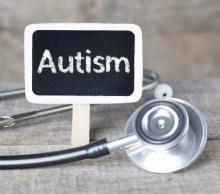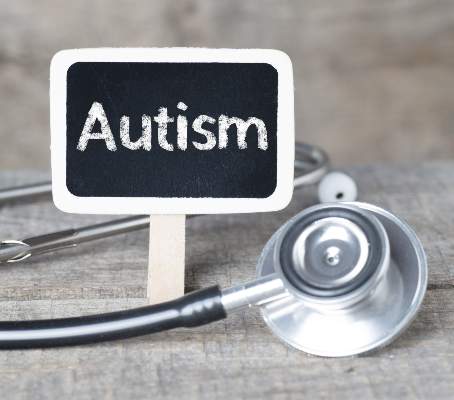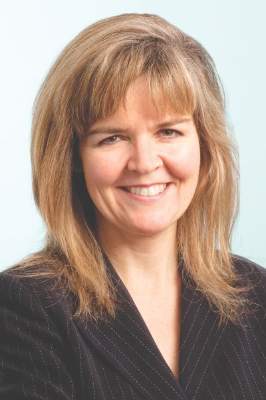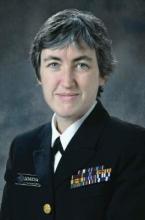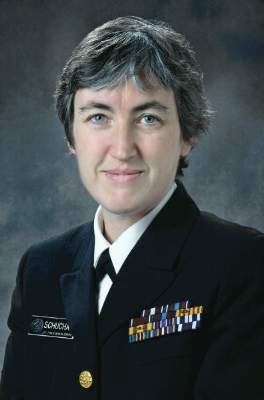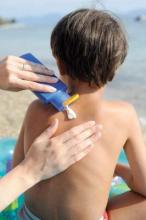User login
Consider comorbidities in psoriasis treatment for better outcomes
GRAND CAYMAN – Emerging data increasingly link psoriasis with cardiovascular disease, diabetes, and depression, leading one expert to suggest a more integrated approach to care in patients with these comorbid conditions.
“I think people are starting to understand that the skin is just a marker for inflammation,” Dr. J. Mark Jackson of the University of Louisville (Ky.), said at this year’s annual Caribbean Dermatology Symposium, provided by Global Academy for Medical Education, a sister company to this news organization.
Growing evidence suggests cardiovascular disease is more common in patients with severe psoriasis. The overlap between the two disease states is thought to occur through similar patterns of inflammation, which Dr. Jackson said indicates that patient outcomes for both could be better if clinicians take an integrated approach to treatment. “Skin disease is an excellent way to study new therapies for other diseases,” said Dr. Jackson. “We can actually look at the skin, so it’s a lot easier to study it than the kidney, heart, or lung” (J Am Acad Dermatol. 2012 Nov 12;67[3]:357-62).
Screening for CVD, as well as for other comorbidities, such as diabetes and depression – both of which tend to occur at higher rates in persons with psoriasis – could also help improve compliance rates, according to Dr. Jackson (Dermatology. 2012;225[2]:121-6). .
“Especially if patients are heavy, if they smoke, if their lipids are high, if they have high blood pressure, or a history of heart disease, it’s important to remember that all of these things are connected to chronic inflammation. I think if we keep that in mind, we can have a better health outcome overall,” Dr. Jackson said.
A survey of 163 psoriasis patients published in 2012 found that comorbidities significantly affected patients’ preferences for psoriasis treatments: Those with psoriatic arthritis were more focused on the probability of benefit (P = .037), those with CVD worried about the probability of side effects (P = .046), and those with depression were concerned about treatment duration (P = .047), and cost (P = .023) (J Am Acad Dermatol. 2012 Oct 19;67[3]:363-72).
Because psoriasis is also associated with higher prevalence and incidence rates of type 2 diabetes and metabolic syndrome, particularly in patients with severe psoriasis, Dr. Jackson recommended screening for these diseases when monitoring patients during their follow-up visits (JAMA Dermatol. 2013 Jan;149[1]:84-91).
“Metabolic syndrome gives you more trouble controlling psoriasis and vice versa,” Dr. Jackson said. “It’s important to tell patients that the better health they are in, the better their medicines will work, and the better response their psoriasis will have.”
Dr. Jackson has financial ties to several pharmaceutical companies, including AbbVie, Amgen, Dermira, Galdera, Merck, Novartis, Pfizer, and others.
On Twitter @whitneymcknight
GRAND CAYMAN – Emerging data increasingly link psoriasis with cardiovascular disease, diabetes, and depression, leading one expert to suggest a more integrated approach to care in patients with these comorbid conditions.
“I think people are starting to understand that the skin is just a marker for inflammation,” Dr. J. Mark Jackson of the University of Louisville (Ky.), said at this year’s annual Caribbean Dermatology Symposium, provided by Global Academy for Medical Education, a sister company to this news organization.
Growing evidence suggests cardiovascular disease is more common in patients with severe psoriasis. The overlap between the two disease states is thought to occur through similar patterns of inflammation, which Dr. Jackson said indicates that patient outcomes for both could be better if clinicians take an integrated approach to treatment. “Skin disease is an excellent way to study new therapies for other diseases,” said Dr. Jackson. “We can actually look at the skin, so it’s a lot easier to study it than the kidney, heart, or lung” (J Am Acad Dermatol. 2012 Nov 12;67[3]:357-62).
Screening for CVD, as well as for other comorbidities, such as diabetes and depression – both of which tend to occur at higher rates in persons with psoriasis – could also help improve compliance rates, according to Dr. Jackson (Dermatology. 2012;225[2]:121-6). .
“Especially if patients are heavy, if they smoke, if their lipids are high, if they have high blood pressure, or a history of heart disease, it’s important to remember that all of these things are connected to chronic inflammation. I think if we keep that in mind, we can have a better health outcome overall,” Dr. Jackson said.
A survey of 163 psoriasis patients published in 2012 found that comorbidities significantly affected patients’ preferences for psoriasis treatments: Those with psoriatic arthritis were more focused on the probability of benefit (P = .037), those with CVD worried about the probability of side effects (P = .046), and those with depression were concerned about treatment duration (P = .047), and cost (P = .023) (J Am Acad Dermatol. 2012 Oct 19;67[3]:363-72).
Because psoriasis is also associated with higher prevalence and incidence rates of type 2 diabetes and metabolic syndrome, particularly in patients with severe psoriasis, Dr. Jackson recommended screening for these diseases when monitoring patients during their follow-up visits (JAMA Dermatol. 2013 Jan;149[1]:84-91).
“Metabolic syndrome gives you more trouble controlling psoriasis and vice versa,” Dr. Jackson said. “It’s important to tell patients that the better health they are in, the better their medicines will work, and the better response their psoriasis will have.”
Dr. Jackson has financial ties to several pharmaceutical companies, including AbbVie, Amgen, Dermira, Galdera, Merck, Novartis, Pfizer, and others.
On Twitter @whitneymcknight
GRAND CAYMAN – Emerging data increasingly link psoriasis with cardiovascular disease, diabetes, and depression, leading one expert to suggest a more integrated approach to care in patients with these comorbid conditions.
“I think people are starting to understand that the skin is just a marker for inflammation,” Dr. J. Mark Jackson of the University of Louisville (Ky.), said at this year’s annual Caribbean Dermatology Symposium, provided by Global Academy for Medical Education, a sister company to this news organization.
Growing evidence suggests cardiovascular disease is more common in patients with severe psoriasis. The overlap between the two disease states is thought to occur through similar patterns of inflammation, which Dr. Jackson said indicates that patient outcomes for both could be better if clinicians take an integrated approach to treatment. “Skin disease is an excellent way to study new therapies for other diseases,” said Dr. Jackson. “We can actually look at the skin, so it’s a lot easier to study it than the kidney, heart, or lung” (J Am Acad Dermatol. 2012 Nov 12;67[3]:357-62).
Screening for CVD, as well as for other comorbidities, such as diabetes and depression – both of which tend to occur at higher rates in persons with psoriasis – could also help improve compliance rates, according to Dr. Jackson (Dermatology. 2012;225[2]:121-6). .
“Especially if patients are heavy, if they smoke, if their lipids are high, if they have high blood pressure, or a history of heart disease, it’s important to remember that all of these things are connected to chronic inflammation. I think if we keep that in mind, we can have a better health outcome overall,” Dr. Jackson said.
A survey of 163 psoriasis patients published in 2012 found that comorbidities significantly affected patients’ preferences for psoriasis treatments: Those with psoriatic arthritis were more focused on the probability of benefit (P = .037), those with CVD worried about the probability of side effects (P = .046), and those with depression were concerned about treatment duration (P = .047), and cost (P = .023) (J Am Acad Dermatol. 2012 Oct 19;67[3]:363-72).
Because psoriasis is also associated with higher prevalence and incidence rates of type 2 diabetes and metabolic syndrome, particularly in patients with severe psoriasis, Dr. Jackson recommended screening for these diseases when monitoring patients during their follow-up visits (JAMA Dermatol. 2013 Jan;149[1]:84-91).
“Metabolic syndrome gives you more trouble controlling psoriasis and vice versa,” Dr. Jackson said. “It’s important to tell patients that the better health they are in, the better their medicines will work, and the better response their psoriasis will have.”
Dr. Jackson has financial ties to several pharmaceutical companies, including AbbVie, Amgen, Dermira, Galdera, Merck, Novartis, Pfizer, and others.
On Twitter @whitneymcknight
EXPERT ANALYSIS FROM THE ANNUAL CARIBBEAN DERMATOLOGY SYMPOSIUM
Universal autism screening lacks sufficient evidence, says USPSTF
Evidence is insufficient to assess whether universal screening for autism spectrum disorder (ASD) is in the best interest of public health, a federal task force has concluded.
The U.S. Preventive Services Task Force issued an “I statement” for insufficient evidence of whether there is a preponderance of either benefit or harm in screening a child for ASD when no previous alarms have been raised by that child’s parents or physicians. Instead, the task force recommends clinicians use their best judgment on a case-by-case basis. The full statement was published online in JAMA (doi: 10.1001/jama.2016.0081).
Guidance from other medical and pediatric organizations is mixed. The American Academy of Pediatrics recommends screening children between ages 18 and 24 months, while the American Academy of Family Physicians agrees evidence is insufficient to say one way or the other. The American Academy of Child and Adolescent Psychiatry (J Am Acad Child Adolesc Psychiatry. 2014;53[2]:237-57) recommends all young children receive routine psychiatric assessments, including questions about ASD symptoms.
After reviewing 26 randomly assigned controlled studies of early intensive behavioral and developmental interventions for ASD in this cohort, the task force could see benefit only in the treatment of older children who had been flagged for the disorder by family members, clinicians, or teachers.
Citing a lack of studies focused on the clinical outcomes of children identified with ASD through screening, as well as treatment studies that were small and featured children clinically referred rather than detected through screening, the task force called on researchers to fill the gap.
“Large, good quality, randomized clinical trials of treatment that enroll young children with ASD identified through screening and that report patient-centered outcomes are critical to understanding the effects of screening. Treatment could be compared with a wait-list control, less intense treatment, or an alternative treatment,” task force members wrote.
Agreeing with the USPSTF’s decision, Dr. Michael Silverstein of Boston University and Dr. Jenny Radesky of the University of Michigan, Ann Arbor, wrote in an accompanying editorial, that the report, “presents an opportunity to motivate better, more relevant research” and demonstrates an understanding of the real-world complexities of primary care. “The USPSTF embraced this issue in all its complexity … and other stakeholders should do the same,” they wrote.
For clinicians seeking a screening tool, two screens the task force identified as useful were the M-CHAT/F and the M-CHAT-R/F (Modified Checklist for Autism in Toddlers, Revised With Follow-Up). Both use parent-rated scales that can lead to a follow-up interview and, if necessary, referral for diagnosis.
The U.S. Centers for Disease Control and Prevention estimated in 2010 that 1 in 68 children were affected by ASD, a 23% increase from 2008. The spike is as yet unattributable to any specific cause, according to the CDC.
Dr. Silverstein and Dr. Radesky did not report any relevant disclosures.
On Twitter @whitneymcknight
“Although studies that directly compare the long-term outcomes of screened vs. nonscreened children in the general population are needed, there is ample evidence that justifies the continued practice of universal autism screening as recommended by the American Academy of Pediatrics,” Geraldine Dawson, Ph.D., wrote in an editorial accompanying the U.S. Preventive Services Task Force’s declaration that there is insufficient evidence to recommend the practice one way or the other.
“Studies indicate that available screening tools do identify children with ASD who would have been otherwise missed and children who begin intervention at an earlier age have improved outcomes,” Dr. Dawson, who directs the Duke Center for Autism and Brain Development in Durham, N.C., wrote.
“The current guidelines that encourage universal autism screening offer the best chance for individuals with ASD to reach their full potential and lead productive lives. We should, therefore, stay the course while continuing to advance our knowledge about the full impact” of autism screening, she said.
Dr. Dawson is on the scientific advisory boards of Janssen Research and Development, Roche Pharmaceuticals, Akili, and Progenity.
“Although studies that directly compare the long-term outcomes of screened vs. nonscreened children in the general population are needed, there is ample evidence that justifies the continued practice of universal autism screening as recommended by the American Academy of Pediatrics,” Geraldine Dawson, Ph.D., wrote in an editorial accompanying the U.S. Preventive Services Task Force’s declaration that there is insufficient evidence to recommend the practice one way or the other.
“Studies indicate that available screening tools do identify children with ASD who would have been otherwise missed and children who begin intervention at an earlier age have improved outcomes,” Dr. Dawson, who directs the Duke Center for Autism and Brain Development in Durham, N.C., wrote.
“The current guidelines that encourage universal autism screening offer the best chance for individuals with ASD to reach their full potential and lead productive lives. We should, therefore, stay the course while continuing to advance our knowledge about the full impact” of autism screening, she said.
Dr. Dawson is on the scientific advisory boards of Janssen Research and Development, Roche Pharmaceuticals, Akili, and Progenity.
“Although studies that directly compare the long-term outcomes of screened vs. nonscreened children in the general population are needed, there is ample evidence that justifies the continued practice of universal autism screening as recommended by the American Academy of Pediatrics,” Geraldine Dawson, Ph.D., wrote in an editorial accompanying the U.S. Preventive Services Task Force’s declaration that there is insufficient evidence to recommend the practice one way or the other.
“Studies indicate that available screening tools do identify children with ASD who would have been otherwise missed and children who begin intervention at an earlier age have improved outcomes,” Dr. Dawson, who directs the Duke Center for Autism and Brain Development in Durham, N.C., wrote.
“The current guidelines that encourage universal autism screening offer the best chance for individuals with ASD to reach their full potential and lead productive lives. We should, therefore, stay the course while continuing to advance our knowledge about the full impact” of autism screening, she said.
Dr. Dawson is on the scientific advisory boards of Janssen Research and Development, Roche Pharmaceuticals, Akili, and Progenity.
Evidence is insufficient to assess whether universal screening for autism spectrum disorder (ASD) is in the best interest of public health, a federal task force has concluded.
The U.S. Preventive Services Task Force issued an “I statement” for insufficient evidence of whether there is a preponderance of either benefit or harm in screening a child for ASD when no previous alarms have been raised by that child’s parents or physicians. Instead, the task force recommends clinicians use their best judgment on a case-by-case basis. The full statement was published online in JAMA (doi: 10.1001/jama.2016.0081).
Guidance from other medical and pediatric organizations is mixed. The American Academy of Pediatrics recommends screening children between ages 18 and 24 months, while the American Academy of Family Physicians agrees evidence is insufficient to say one way or the other. The American Academy of Child and Adolescent Psychiatry (J Am Acad Child Adolesc Psychiatry. 2014;53[2]:237-57) recommends all young children receive routine psychiatric assessments, including questions about ASD symptoms.
After reviewing 26 randomly assigned controlled studies of early intensive behavioral and developmental interventions for ASD in this cohort, the task force could see benefit only in the treatment of older children who had been flagged for the disorder by family members, clinicians, or teachers.
Citing a lack of studies focused on the clinical outcomes of children identified with ASD through screening, as well as treatment studies that were small and featured children clinically referred rather than detected through screening, the task force called on researchers to fill the gap.
“Large, good quality, randomized clinical trials of treatment that enroll young children with ASD identified through screening and that report patient-centered outcomes are critical to understanding the effects of screening. Treatment could be compared with a wait-list control, less intense treatment, or an alternative treatment,” task force members wrote.
Agreeing with the USPSTF’s decision, Dr. Michael Silverstein of Boston University and Dr. Jenny Radesky of the University of Michigan, Ann Arbor, wrote in an accompanying editorial, that the report, “presents an opportunity to motivate better, more relevant research” and demonstrates an understanding of the real-world complexities of primary care. “The USPSTF embraced this issue in all its complexity … and other stakeholders should do the same,” they wrote.
For clinicians seeking a screening tool, two screens the task force identified as useful were the M-CHAT/F and the M-CHAT-R/F (Modified Checklist for Autism in Toddlers, Revised With Follow-Up). Both use parent-rated scales that can lead to a follow-up interview and, if necessary, referral for diagnosis.
The U.S. Centers for Disease Control and Prevention estimated in 2010 that 1 in 68 children were affected by ASD, a 23% increase from 2008. The spike is as yet unattributable to any specific cause, according to the CDC.
Dr. Silverstein and Dr. Radesky did not report any relevant disclosures.
On Twitter @whitneymcknight
Evidence is insufficient to assess whether universal screening for autism spectrum disorder (ASD) is in the best interest of public health, a federal task force has concluded.
The U.S. Preventive Services Task Force issued an “I statement” for insufficient evidence of whether there is a preponderance of either benefit or harm in screening a child for ASD when no previous alarms have been raised by that child’s parents or physicians. Instead, the task force recommends clinicians use their best judgment on a case-by-case basis. The full statement was published online in JAMA (doi: 10.1001/jama.2016.0081).
Guidance from other medical and pediatric organizations is mixed. The American Academy of Pediatrics recommends screening children between ages 18 and 24 months, while the American Academy of Family Physicians agrees evidence is insufficient to say one way or the other. The American Academy of Child and Adolescent Psychiatry (J Am Acad Child Adolesc Psychiatry. 2014;53[2]:237-57) recommends all young children receive routine psychiatric assessments, including questions about ASD symptoms.
After reviewing 26 randomly assigned controlled studies of early intensive behavioral and developmental interventions for ASD in this cohort, the task force could see benefit only in the treatment of older children who had been flagged for the disorder by family members, clinicians, or teachers.
Citing a lack of studies focused on the clinical outcomes of children identified with ASD through screening, as well as treatment studies that were small and featured children clinically referred rather than detected through screening, the task force called on researchers to fill the gap.
“Large, good quality, randomized clinical trials of treatment that enroll young children with ASD identified through screening and that report patient-centered outcomes are critical to understanding the effects of screening. Treatment could be compared with a wait-list control, less intense treatment, or an alternative treatment,” task force members wrote.
Agreeing with the USPSTF’s decision, Dr. Michael Silverstein of Boston University and Dr. Jenny Radesky of the University of Michigan, Ann Arbor, wrote in an accompanying editorial, that the report, “presents an opportunity to motivate better, more relevant research” and demonstrates an understanding of the real-world complexities of primary care. “The USPSTF embraced this issue in all its complexity … and other stakeholders should do the same,” they wrote.
For clinicians seeking a screening tool, two screens the task force identified as useful were the M-CHAT/F and the M-CHAT-R/F (Modified Checklist for Autism in Toddlers, Revised With Follow-Up). Both use parent-rated scales that can lead to a follow-up interview and, if necessary, referral for diagnosis.
The U.S. Centers for Disease Control and Prevention estimated in 2010 that 1 in 68 children were affected by ASD, a 23% increase from 2008. The spike is as yet unattributable to any specific cause, according to the CDC.
Dr. Silverstein and Dr. Radesky did not report any relevant disclosures.
On Twitter @whitneymcknight
FROM JAMA
SDEF: Have higher degree of suspicion for pediatric allergic contact dermatitis
Allergic contact dermatitis is often missed in pediatric patients who present with eczema-like skin eruptions, in part because less is known about ACD in children than in adults.
“Often when we see a child with dermatitis, we automatically think of atopic dermatitis, but we should also consider the possibility of allergic contact dermatitis,” Dr. Joseph F. Fowler Jr. said at the Hawaii Dermatology Seminar provided by Global Academy for Medical Education/Skin Disease Education Foundation.
A 2012 cohort study of 349 children between 0 and 15 years indicated that even very young children who were patch tested for common allergens had at least one positive result. Investigators found that nearly three-quarters of children studied tested positive for at least one allergen, typically nickel, other metals, fragrance, or preservatives (Dermatitis. 2012 Nov-Dec;23[6]:275-80).
“This is very similar to what we see in the adult population,” said Dr. Fowler, clinical professor of dermatology at the University of Louisville (Ky.). “Other studies in recent years have borne this out.”
Dr. Fowler suggested having a high degree of suspicion for ACD, especially when pediatric patients present with:
• Chronic, difficult to control atopic condition, as this could indicate a systemic reaction.
• Localized or facial dermatitis, as this could indicate the point of contact with an allergen.
• Scattered, generalized dermatitis, which also could represent systemic allergic contact dermatitis.
• Dermatitis that worsens, despite otherwise adequate treatment regimen.
• Reactions following contact with metals, fragrances, topical components, such as preservatives or neomycin.
“In these situations, patch testing will help determine that an allergen is implicated,” Dr. Fowler said.
In children with eczema, Dr. Fowler recommended patch testing when the eczema is not in the typical areas such as behind the knees or elbows, or if it started in typical areas and then spread elsewhere, especially in children around 5 years old.
“The moral of the story is that kids can be allergic to the same things as adults, even though we have less about this in the literature,” Dr. Fowler. “Skin testing or blood testing for food allergies, unless very strongly positive, usually aren’t helpful in the management of the atopic individual. Patch test more and prick test less.”
Dr. Fowler disclosed a number of relationships with companies in the dermatology space. SDEF and this news organization are owned by the same parent company.
On Twitter @whitneymcknight
Allergic contact dermatitis is often missed in pediatric patients who present with eczema-like skin eruptions, in part because less is known about ACD in children than in adults.
“Often when we see a child with dermatitis, we automatically think of atopic dermatitis, but we should also consider the possibility of allergic contact dermatitis,” Dr. Joseph F. Fowler Jr. said at the Hawaii Dermatology Seminar provided by Global Academy for Medical Education/Skin Disease Education Foundation.
A 2012 cohort study of 349 children between 0 and 15 years indicated that even very young children who were patch tested for common allergens had at least one positive result. Investigators found that nearly three-quarters of children studied tested positive for at least one allergen, typically nickel, other metals, fragrance, or preservatives (Dermatitis. 2012 Nov-Dec;23[6]:275-80).
“This is very similar to what we see in the adult population,” said Dr. Fowler, clinical professor of dermatology at the University of Louisville (Ky.). “Other studies in recent years have borne this out.”
Dr. Fowler suggested having a high degree of suspicion for ACD, especially when pediatric patients present with:
• Chronic, difficult to control atopic condition, as this could indicate a systemic reaction.
• Localized or facial dermatitis, as this could indicate the point of contact with an allergen.
• Scattered, generalized dermatitis, which also could represent systemic allergic contact dermatitis.
• Dermatitis that worsens, despite otherwise adequate treatment regimen.
• Reactions following contact with metals, fragrances, topical components, such as preservatives or neomycin.
“In these situations, patch testing will help determine that an allergen is implicated,” Dr. Fowler said.
In children with eczema, Dr. Fowler recommended patch testing when the eczema is not in the typical areas such as behind the knees or elbows, or if it started in typical areas and then spread elsewhere, especially in children around 5 years old.
“The moral of the story is that kids can be allergic to the same things as adults, even though we have less about this in the literature,” Dr. Fowler. “Skin testing or blood testing for food allergies, unless very strongly positive, usually aren’t helpful in the management of the atopic individual. Patch test more and prick test less.”
Dr. Fowler disclosed a number of relationships with companies in the dermatology space. SDEF and this news organization are owned by the same parent company.
On Twitter @whitneymcknight
Allergic contact dermatitis is often missed in pediatric patients who present with eczema-like skin eruptions, in part because less is known about ACD in children than in adults.
“Often when we see a child with dermatitis, we automatically think of atopic dermatitis, but we should also consider the possibility of allergic contact dermatitis,” Dr. Joseph F. Fowler Jr. said at the Hawaii Dermatology Seminar provided by Global Academy for Medical Education/Skin Disease Education Foundation.
A 2012 cohort study of 349 children between 0 and 15 years indicated that even very young children who were patch tested for common allergens had at least one positive result. Investigators found that nearly three-quarters of children studied tested positive for at least one allergen, typically nickel, other metals, fragrance, or preservatives (Dermatitis. 2012 Nov-Dec;23[6]:275-80).
“This is very similar to what we see in the adult population,” said Dr. Fowler, clinical professor of dermatology at the University of Louisville (Ky.). “Other studies in recent years have borne this out.”
Dr. Fowler suggested having a high degree of suspicion for ACD, especially when pediatric patients present with:
• Chronic, difficult to control atopic condition, as this could indicate a systemic reaction.
• Localized or facial dermatitis, as this could indicate the point of contact with an allergen.
• Scattered, generalized dermatitis, which also could represent systemic allergic contact dermatitis.
• Dermatitis that worsens, despite otherwise adequate treatment regimen.
• Reactions following contact with metals, fragrances, topical components, such as preservatives or neomycin.
“In these situations, patch testing will help determine that an allergen is implicated,” Dr. Fowler said.
In children with eczema, Dr. Fowler recommended patch testing when the eczema is not in the typical areas such as behind the knees or elbows, or if it started in typical areas and then spread elsewhere, especially in children around 5 years old.
“The moral of the story is that kids can be allergic to the same things as adults, even though we have less about this in the literature,” Dr. Fowler. “Skin testing or blood testing for food allergies, unless very strongly positive, usually aren’t helpful in the management of the atopic individual. Patch test more and prick test less.”
Dr. Fowler disclosed a number of relationships with companies in the dermatology space. SDEF and this news organization are owned by the same parent company.
On Twitter @whitneymcknight
EXPERT ANALYSIS FROM SDEF HAWAII DERMATOLOGY SEMINAR
Feds propose update to substance use privacy rules
Proposed federal regulations aim to improve integrated patient care for substance use disorders while preserving patient privacy.
The Health & Human Services department “is proposing to modernize the existing rules because new models are built on a foundation of information sharing to support coordination of patient care; the development of an electronic infrastructure for managing and exchanging patient data; and an increased focus on performance measurement and quality improvement within the health care system,” officials said in a statement Feb. 5.
The last substantive update to the Confidentiality of Alcohol and Drug Abuse Patient Records regulations – officially known as 42 CFR Part 2 – was in 1987, prior to either the push for integrated care or the use of electronic health records, according to HHS.
“Health care delivery has changed dramatically since the Part 2 regulations were originally promulgated and updated in the 1970s and 1980s,” Dianne J. Bourque, a Boston-based health law attorney, said in an interview. “Part 2’s stringent limitations on a provider’s ability to use and disclose patient information for purposes other than treatment creates a risk of drug and alcohol treatment patients being excluded from innovative care models like ACOs, health information exchanges, or population-based initiatives aimed at improving the quality and efficiency of care.”
Under the proposed regulations, health care providers would be allowed to share patient information except any records specifically related to substance abuse treatment; the proposal simultaneously would tighten requirements that any associated, identifying records be sanitized. Upon request, providers would be required to provide patients with a list of all entities with which their information has been shared.
When finalized, the updated regulations should be better aligned with other privacy and data security laws, including HIPAA, Ms. Bourque said.
However, “it will not be a large step and providers will still have to deal with overlapping and inconsistent requirements. For example, a HIPAA business associate is not the same thing as a Part 2 Qualified Service Organization, which creates complexity and potentially confusion for both providers and vendors,” she said. “There will be a learning curve. Providers will have to think carefully about third-party contract and consent form language.”
The proposed changes also would revise the medical emergency exception, giving providers more discretion in determining what constitutes an actual emergency.
Comments will be accepted on the proposed regulation at www.regulations.gov through April 11, 2016.
On Twitter @whitneymcknight
Proposed federal regulations aim to improve integrated patient care for substance use disorders while preserving patient privacy.
The Health & Human Services department “is proposing to modernize the existing rules because new models are built on a foundation of information sharing to support coordination of patient care; the development of an electronic infrastructure for managing and exchanging patient data; and an increased focus on performance measurement and quality improvement within the health care system,” officials said in a statement Feb. 5.
The last substantive update to the Confidentiality of Alcohol and Drug Abuse Patient Records regulations – officially known as 42 CFR Part 2 – was in 1987, prior to either the push for integrated care or the use of electronic health records, according to HHS.
“Health care delivery has changed dramatically since the Part 2 regulations were originally promulgated and updated in the 1970s and 1980s,” Dianne J. Bourque, a Boston-based health law attorney, said in an interview. “Part 2’s stringent limitations on a provider’s ability to use and disclose patient information for purposes other than treatment creates a risk of drug and alcohol treatment patients being excluded from innovative care models like ACOs, health information exchanges, or population-based initiatives aimed at improving the quality and efficiency of care.”
Under the proposed regulations, health care providers would be allowed to share patient information except any records specifically related to substance abuse treatment; the proposal simultaneously would tighten requirements that any associated, identifying records be sanitized. Upon request, providers would be required to provide patients with a list of all entities with which their information has been shared.
When finalized, the updated regulations should be better aligned with other privacy and data security laws, including HIPAA, Ms. Bourque said.
However, “it will not be a large step and providers will still have to deal with overlapping and inconsistent requirements. For example, a HIPAA business associate is not the same thing as a Part 2 Qualified Service Organization, which creates complexity and potentially confusion for both providers and vendors,” she said. “There will be a learning curve. Providers will have to think carefully about third-party contract and consent form language.”
The proposed changes also would revise the medical emergency exception, giving providers more discretion in determining what constitutes an actual emergency.
Comments will be accepted on the proposed regulation at www.regulations.gov through April 11, 2016.
On Twitter @whitneymcknight
Proposed federal regulations aim to improve integrated patient care for substance use disorders while preserving patient privacy.
The Health & Human Services department “is proposing to modernize the existing rules because new models are built on a foundation of information sharing to support coordination of patient care; the development of an electronic infrastructure for managing and exchanging patient data; and an increased focus on performance measurement and quality improvement within the health care system,” officials said in a statement Feb. 5.
The last substantive update to the Confidentiality of Alcohol and Drug Abuse Patient Records regulations – officially known as 42 CFR Part 2 – was in 1987, prior to either the push for integrated care or the use of electronic health records, according to HHS.
“Health care delivery has changed dramatically since the Part 2 regulations were originally promulgated and updated in the 1970s and 1980s,” Dianne J. Bourque, a Boston-based health law attorney, said in an interview. “Part 2’s stringent limitations on a provider’s ability to use and disclose patient information for purposes other than treatment creates a risk of drug and alcohol treatment patients being excluded from innovative care models like ACOs, health information exchanges, or population-based initiatives aimed at improving the quality and efficiency of care.”
Under the proposed regulations, health care providers would be allowed to share patient information except any records specifically related to substance abuse treatment; the proposal simultaneously would tighten requirements that any associated, identifying records be sanitized. Upon request, providers would be required to provide patients with a list of all entities with which their information has been shared.
When finalized, the updated regulations should be better aligned with other privacy and data security laws, including HIPAA, Ms. Bourque said.
However, “it will not be a large step and providers will still have to deal with overlapping and inconsistent requirements. For example, a HIPAA business associate is not the same thing as a Part 2 Qualified Service Organization, which creates complexity and potentially confusion for both providers and vendors,” she said. “There will be a learning curve. Providers will have to think carefully about third-party contract and consent form language.”
The proposed changes also would revise the medical emergency exception, giving providers more discretion in determining what constitutes an actual emergency.
Comments will be accepted on the proposed regulation at www.regulations.gov through April 11, 2016.
On Twitter @whitneymcknight
VIDEO: Humor, psychology turn noncompliance into better outcomes
GRAND CAYMAN – “Why say ‘noncompliant patient’? It’s redundant!”
That’s what Dr. Steven R. Feldman jokingly told an audience at this year’s Caribbean Dermatology Symposium, provided by the Global Academy for Medical Education.
In this video interview, Dr. Feldman, the director of the Psoriasis Treatment Center at Wake Forest University, Winston-Salem, N.C., recounts anecdotes that led him to understand what it takes to get patients to comply with treatment, also shares his tips for getting patients to take a more active role in healing what ails them, whether it be psoriasis or any other illness.
Global Academy and this news organization are owned by the same parent company.
The video associated with this article is no longer available on this site. Please view all of our videos on the MDedge YouTube channel
On Twitter @whitneymcknight
GRAND CAYMAN – “Why say ‘noncompliant patient’? It’s redundant!”
That’s what Dr. Steven R. Feldman jokingly told an audience at this year’s Caribbean Dermatology Symposium, provided by the Global Academy for Medical Education.
In this video interview, Dr. Feldman, the director of the Psoriasis Treatment Center at Wake Forest University, Winston-Salem, N.C., recounts anecdotes that led him to understand what it takes to get patients to comply with treatment, also shares his tips for getting patients to take a more active role in healing what ails them, whether it be psoriasis or any other illness.
Global Academy and this news organization are owned by the same parent company.
The video associated with this article is no longer available on this site. Please view all of our videos on the MDedge YouTube channel
On Twitter @whitneymcknight
GRAND CAYMAN – “Why say ‘noncompliant patient’? It’s redundant!”
That’s what Dr. Steven R. Feldman jokingly told an audience at this year’s Caribbean Dermatology Symposium, provided by the Global Academy for Medical Education.
In this video interview, Dr. Feldman, the director of the Psoriasis Treatment Center at Wake Forest University, Winston-Salem, N.C., recounts anecdotes that led him to understand what it takes to get patients to comply with treatment, also shares his tips for getting patients to take a more active role in healing what ails them, whether it be psoriasis or any other illness.
Global Academy and this news organization are owned by the same parent company.
The video associated with this article is no longer available on this site. Please view all of our videos on the MDedge YouTube channel
On Twitter @whitneymcknight
AT THE CARIBBEAN DERMATOLOGY SYMPOSIUM
CDC: Screen women for alcohol, birth control use
An estimated 3.3 million U.S. women aged 15-44 years risk conceiving children with fetal alcohol spectrum disorders by using alcohol but not birth control.
The finding has officials at the Centers for Disease Control and Prevention urging physicians to screen this group for concomitant drinking and nonuse of contraception. The data come from an analysis of 4,303 nonpregnant, nonsterile women ages 15-44 years from the 2011-2013 National Survey of Family Growth, conducted by the CDC (MMWR. 2016;65:1-7.).
“Alcohol can permanently harm a developing baby before a woman knows she is pregnant,” Dr. Anne Schuchat, the CDC’s principal deputy director, said during a media briefing on Feb. 2. “About half of all pregnancies in the United States are unplanned, and even if planned, most women won’t know they are pregnant for the first month or so, when they might still be drinking. The risk is real. Why take the chance?”
Fetal alcohol spectrum disorders (FASD) can include physical, behavioral, and intellectual disabilities that can last for a child’s lifetime. Dr, Schuchat said the CDC estimates that as many as 1 in 20 U.S. schoolchildren may have FASD. Currently, there are no data on what amounts of alcohol are safe for a woman to drink at any stage of pregnancy.
“Not drinking alcohol is one of the best things you can do to ensure the health of your baby,” Dr. Schuchat said.
For the study, a woman was considered at risk for an alcohol-exposed pregnancy during the past month if she was nonsterile and had sex with a nonsterile male, drank any alcohol, and did not use contraception in the past month. The CDC found the weighted prevalence of alcohol-exposed pregnancy risk among U.S. women aged 15-44 years was 7.3%.
During a 1-month period, approximately 3.3 million U.S. women were at risk for an alcohol-exposed pregnancy. The highest risk group – at 10.4% – were women aged 25-29 years. The lowest risk group were those aged 15-20 years, at 2.2%.
Neither race nor ethnicity were found to be risk factors, although the risk for an alcohol-exposed pregnancy was higher among married and cohabitating women at 11.7% and 13.6% respectively, compared with their single counterparts (2.3%).
The study also found that three-quarters of women who want to get pregnant as soon as possible do not stop drinking alcohol after discontinuing contraception.
Physicians and other health care providers should advise women who want to become pregnant to stop drinking alcohol as soon as they stop using birth control, Dr. Schuchat said.
She added that physicians should screen all adults for alcohol use, not just women, even though that is not currently standard practice. “We think it should be more common to do on a regular basis.” Dr. Schuchat said the federal government requires most health plans to cover alcohol screening without cost to the patient.
The CDC recommends that physicians:
• Screen all adult female patients for alcohol use annually.
• Advise women to cease all alcohol intake if there is any chance at all that she could be pregnant.
• Counsel, refer, and follow-up with patients who need additional support to not drink while pregnant.
• Use correct billing codes to be reimbursed for screening and counseling.
The American College of Obstetricians and Gynecologists, which recommends that women completely abstain from alcohol during pregnancy, praised the CDC’s guidance that physicians routinely screen women regarding their alcohol use.
Dr. Mark S. DeFrancesco, ACOG president, said the other important message from the CDC report is that physicians should counsel women about contraception use.
“As the CDC notes, roughly half of all pregnancies in the United States are unintended. In many cases of unintended pregnancy, women inadvertently expose their fetuses to alcohol and its teratogenic effects prior to discovering that they are pregnant,” he said in statement. “This is just another reason why it’s so important that health care providers counsel women about how to prevent unintended pregnancy through use of the contraceptive method that is right for them. There are many benefits to helping women become pregnant only when they are ready, and avoiding alcohol exposure is one of them.”
On Twitter @whitneymcknight
An estimated 3.3 million U.S. women aged 15-44 years risk conceiving children with fetal alcohol spectrum disorders by using alcohol but not birth control.
The finding has officials at the Centers for Disease Control and Prevention urging physicians to screen this group for concomitant drinking and nonuse of contraception. The data come from an analysis of 4,303 nonpregnant, nonsterile women ages 15-44 years from the 2011-2013 National Survey of Family Growth, conducted by the CDC (MMWR. 2016;65:1-7.).
“Alcohol can permanently harm a developing baby before a woman knows she is pregnant,” Dr. Anne Schuchat, the CDC’s principal deputy director, said during a media briefing on Feb. 2. “About half of all pregnancies in the United States are unplanned, and even if planned, most women won’t know they are pregnant for the first month or so, when they might still be drinking. The risk is real. Why take the chance?”
Fetal alcohol spectrum disorders (FASD) can include physical, behavioral, and intellectual disabilities that can last for a child’s lifetime. Dr, Schuchat said the CDC estimates that as many as 1 in 20 U.S. schoolchildren may have FASD. Currently, there are no data on what amounts of alcohol are safe for a woman to drink at any stage of pregnancy.
“Not drinking alcohol is one of the best things you can do to ensure the health of your baby,” Dr. Schuchat said.
For the study, a woman was considered at risk for an alcohol-exposed pregnancy during the past month if she was nonsterile and had sex with a nonsterile male, drank any alcohol, and did not use contraception in the past month. The CDC found the weighted prevalence of alcohol-exposed pregnancy risk among U.S. women aged 15-44 years was 7.3%.
During a 1-month period, approximately 3.3 million U.S. women were at risk for an alcohol-exposed pregnancy. The highest risk group – at 10.4% – were women aged 25-29 years. The lowest risk group were those aged 15-20 years, at 2.2%.
Neither race nor ethnicity were found to be risk factors, although the risk for an alcohol-exposed pregnancy was higher among married and cohabitating women at 11.7% and 13.6% respectively, compared with their single counterparts (2.3%).
The study also found that three-quarters of women who want to get pregnant as soon as possible do not stop drinking alcohol after discontinuing contraception.
Physicians and other health care providers should advise women who want to become pregnant to stop drinking alcohol as soon as they stop using birth control, Dr. Schuchat said.
She added that physicians should screen all adults for alcohol use, not just women, even though that is not currently standard practice. “We think it should be more common to do on a regular basis.” Dr. Schuchat said the federal government requires most health plans to cover alcohol screening without cost to the patient.
The CDC recommends that physicians:
• Screen all adult female patients for alcohol use annually.
• Advise women to cease all alcohol intake if there is any chance at all that she could be pregnant.
• Counsel, refer, and follow-up with patients who need additional support to not drink while pregnant.
• Use correct billing codes to be reimbursed for screening and counseling.
The American College of Obstetricians and Gynecologists, which recommends that women completely abstain from alcohol during pregnancy, praised the CDC’s guidance that physicians routinely screen women regarding their alcohol use.
Dr. Mark S. DeFrancesco, ACOG president, said the other important message from the CDC report is that physicians should counsel women about contraception use.
“As the CDC notes, roughly half of all pregnancies in the United States are unintended. In many cases of unintended pregnancy, women inadvertently expose their fetuses to alcohol and its teratogenic effects prior to discovering that they are pregnant,” he said in statement. “This is just another reason why it’s so important that health care providers counsel women about how to prevent unintended pregnancy through use of the contraceptive method that is right for them. There are many benefits to helping women become pregnant only when they are ready, and avoiding alcohol exposure is one of them.”
On Twitter @whitneymcknight
An estimated 3.3 million U.S. women aged 15-44 years risk conceiving children with fetal alcohol spectrum disorders by using alcohol but not birth control.
The finding has officials at the Centers for Disease Control and Prevention urging physicians to screen this group for concomitant drinking and nonuse of contraception. The data come from an analysis of 4,303 nonpregnant, nonsterile women ages 15-44 years from the 2011-2013 National Survey of Family Growth, conducted by the CDC (MMWR. 2016;65:1-7.).
“Alcohol can permanently harm a developing baby before a woman knows she is pregnant,” Dr. Anne Schuchat, the CDC’s principal deputy director, said during a media briefing on Feb. 2. “About half of all pregnancies in the United States are unplanned, and even if planned, most women won’t know they are pregnant for the first month or so, when they might still be drinking. The risk is real. Why take the chance?”
Fetal alcohol spectrum disorders (FASD) can include physical, behavioral, and intellectual disabilities that can last for a child’s lifetime. Dr, Schuchat said the CDC estimates that as many as 1 in 20 U.S. schoolchildren may have FASD. Currently, there are no data on what amounts of alcohol are safe for a woman to drink at any stage of pregnancy.
“Not drinking alcohol is one of the best things you can do to ensure the health of your baby,” Dr. Schuchat said.
For the study, a woman was considered at risk for an alcohol-exposed pregnancy during the past month if she was nonsterile and had sex with a nonsterile male, drank any alcohol, and did not use contraception in the past month. The CDC found the weighted prevalence of alcohol-exposed pregnancy risk among U.S. women aged 15-44 years was 7.3%.
During a 1-month period, approximately 3.3 million U.S. women were at risk for an alcohol-exposed pregnancy. The highest risk group – at 10.4% – were women aged 25-29 years. The lowest risk group were those aged 15-20 years, at 2.2%.
Neither race nor ethnicity were found to be risk factors, although the risk for an alcohol-exposed pregnancy was higher among married and cohabitating women at 11.7% and 13.6% respectively, compared with their single counterparts (2.3%).
The study also found that three-quarters of women who want to get pregnant as soon as possible do not stop drinking alcohol after discontinuing contraception.
Physicians and other health care providers should advise women who want to become pregnant to stop drinking alcohol as soon as they stop using birth control, Dr. Schuchat said.
She added that physicians should screen all adults for alcohol use, not just women, even though that is not currently standard practice. “We think it should be more common to do on a regular basis.” Dr. Schuchat said the federal government requires most health plans to cover alcohol screening without cost to the patient.
The CDC recommends that physicians:
• Screen all adult female patients for alcohol use annually.
• Advise women to cease all alcohol intake if there is any chance at all that she could be pregnant.
• Counsel, refer, and follow-up with patients who need additional support to not drink while pregnant.
• Use correct billing codes to be reimbursed for screening and counseling.
The American College of Obstetricians and Gynecologists, which recommends that women completely abstain from alcohol during pregnancy, praised the CDC’s guidance that physicians routinely screen women regarding their alcohol use.
Dr. Mark S. DeFrancesco, ACOG president, said the other important message from the CDC report is that physicians should counsel women about contraception use.
“As the CDC notes, roughly half of all pregnancies in the United States are unintended. In many cases of unintended pregnancy, women inadvertently expose their fetuses to alcohol and its teratogenic effects prior to discovering that they are pregnant,” he said in statement. “This is just another reason why it’s so important that health care providers counsel women about how to prevent unintended pregnancy through use of the contraceptive method that is right for them. There are many benefits to helping women become pregnant only when they are ready, and avoiding alcohol exposure is one of them.”
On Twitter @whitneymcknight
FROM THE MMWR
Key clinical point: The CDC advises physicians to screen women for alcohol use and provide contraception counseling.
Major finding: A total of 3.3 million women aged 15-44 years risk conceiving a child with FASD by using alcohol and having unprotected sex.
Data source: Data on 4,303 nonpregnant, nonsterile women aged 15-44 years from the 2011-2013 National Survey of Family Growth.
Disclosures: The researchers did not report having any financial disclosures.
VIDEO: Isotretinoin Revisited: the Good, the Bad, the Latest
GRAND CAYMAN – More than 30 years after isotretinoin became available for the treatment of acne, what are some of the tropes that still hold true? And what misperceptions persist? In a video interview, Dr. Julie C. Harper, a private practitioner in Birmingham, Ala., shares the most up-to-date evidence for and against the drug’s use in patients with acne, including a look at the risk for depression and inflammatory bowel disease, among other tips for prescribing this drug in practice. She was interviewed at the Caribbean Dermatology Symposium provided by Global Academy for Medical Education.
Global Academy and this news organization are owned by the same parent company.

GRAND CAYMAN – More than 30 years after isotretinoin became available for the treatment of acne, what are some of the tropes that still hold true? And what misperceptions persist? In a video interview, Dr. Julie C. Harper, a private practitioner in Birmingham, Ala., shares the most up-to-date evidence for and against the drug’s use in patients with acne, including a look at the risk for depression and inflammatory bowel disease, among other tips for prescribing this drug in practice. She was interviewed at the Caribbean Dermatology Symposium provided by Global Academy for Medical Education.
Global Academy and this news organization are owned by the same parent company.

GRAND CAYMAN – More than 30 years after isotretinoin became available for the treatment of acne, what are some of the tropes that still hold true? And what misperceptions persist? In a video interview, Dr. Julie C. Harper, a private practitioner in Birmingham, Ala., shares the most up-to-date evidence for and against the drug’s use in patients with acne, including a look at the risk for depression and inflammatory bowel disease, among other tips for prescribing this drug in practice. She was interviewed at the Caribbean Dermatology Symposium provided by Global Academy for Medical Education.
Global Academy and this news organization are owned by the same parent company.

AT THE CARIBBEAN DERMATOLOGY SYMPOSIUM
VIDEO: Isotretinoin revisited: the good, the bad, the latest
GRAND CAYMAN – More than 30 years after isotretinoin became available for the treatment of acne, what are some of the tropes that still hold true? And what misperceptions persist? In a video interview, Dr. Julie C. Harper, a private practitioner in Birmingham, Ala., shares the most up-to-date evidence for and against the drug’s use in patients with acne, including a look at the risk for depression and inflammatory bowel disease, among other tips for prescribing this drug in practice. She was interviewed at the Caribbean Dermatology Symposium provided by Global Academy for Medical Education.
Global Academy and this news organization are owned by the same parent company.
On Twitter @whitneymcknight
GRAND CAYMAN – More than 30 years after isotretinoin became available for the treatment of acne, what are some of the tropes that still hold true? And what misperceptions persist? In a video interview, Dr. Julie C. Harper, a private practitioner in Birmingham, Ala., shares the most up-to-date evidence for and against the drug’s use in patients with acne, including a look at the risk for depression and inflammatory bowel disease, among other tips for prescribing this drug in practice. She was interviewed at the Caribbean Dermatology Symposium provided by Global Academy for Medical Education.
Global Academy and this news organization are owned by the same parent company.
On Twitter @whitneymcknight
GRAND CAYMAN – More than 30 years after isotretinoin became available for the treatment of acne, what are some of the tropes that still hold true? And what misperceptions persist? In a video interview, Dr. Julie C. Harper, a private practitioner in Birmingham, Ala., shares the most up-to-date evidence for and against the drug’s use in patients with acne, including a look at the risk for depression and inflammatory bowel disease, among other tips for prescribing this drug in practice. She was interviewed at the Caribbean Dermatology Symposium provided by Global Academy for Medical Education.
Global Academy and this news organization are owned by the same parent company.
On Twitter @whitneymcknight
AT THE CARIBBEAN DERMATOLOGY SYMPOSIUM
VIDEO: Addressing rosacea comorbidities and their role in flushing
GRAND CAYMAN – What impact do treatments for gastroesophageal reflux disease (GERD), hypertension, hyperlipidemia, and menopausal flushing have in patients with erythematotelangiectatic and papulopustular rosacea?
In a video interview at the Caribbean Dermatology Symposium, Dr. Jonathan K. Wilkin, who is in private practice in Grand Cayman and is a former director of the Food and Drug Administration’s Division of Dermatologic and Dental Drug Products, refers to recent studies that have linked rosacea to these and other comorbidities. He shares his insights into how addressing these four comorbidities into your treatment calculus can improve outcomes in patients who have rosacea with flushing.
The meeting is provided by Global Academy for Medical Education. Global Academy and this news organization are owned by the same parent company.
The video associated with this article is no longer available on this site. Please view all of our videos on the MDedge YouTube channel
On Twitter @whitneymcknight
GRAND CAYMAN – What impact do treatments for gastroesophageal reflux disease (GERD), hypertension, hyperlipidemia, and menopausal flushing have in patients with erythematotelangiectatic and papulopustular rosacea?
In a video interview at the Caribbean Dermatology Symposium, Dr. Jonathan K. Wilkin, who is in private practice in Grand Cayman and is a former director of the Food and Drug Administration’s Division of Dermatologic and Dental Drug Products, refers to recent studies that have linked rosacea to these and other comorbidities. He shares his insights into how addressing these four comorbidities into your treatment calculus can improve outcomes in patients who have rosacea with flushing.
The meeting is provided by Global Academy for Medical Education. Global Academy and this news organization are owned by the same parent company.
The video associated with this article is no longer available on this site. Please view all of our videos on the MDedge YouTube channel
On Twitter @whitneymcknight
GRAND CAYMAN – What impact do treatments for gastroesophageal reflux disease (GERD), hypertension, hyperlipidemia, and menopausal flushing have in patients with erythematotelangiectatic and papulopustular rosacea?
In a video interview at the Caribbean Dermatology Symposium, Dr. Jonathan K. Wilkin, who is in private practice in Grand Cayman and is a former director of the Food and Drug Administration’s Division of Dermatologic and Dental Drug Products, refers to recent studies that have linked rosacea to these and other comorbidities. He shares his insights into how addressing these four comorbidities into your treatment calculus can improve outcomes in patients who have rosacea with flushing.
The meeting is provided by Global Academy for Medical Education. Global Academy and this news organization are owned by the same parent company.
The video associated with this article is no longer available on this site. Please view all of our videos on the MDedge YouTube channel
On Twitter @whitneymcknight
AT THE CARIBBEAN DERMATOLOGY SYMPOSIUM
Simple points about sunscreen products can address confusion over these products
GRAND CAYMAN – Are your patients noncompliant about sun protection? Do they want to use photoprotection but aren’t sure what is best for them? Perhaps they are confused by the multitude of sunscreen manufacturer’s claims or even some claims by consumer and environmental advocates.
Patients are often confused by how much sun protection factor they actually need and marketing hype often makes things worse, according to Dr. Vincent DeLeoof the department of dermatology at the University of Southern California, Los Angeles. “The use of the words ‘babies, natural, hypoallergenic, or organic’ all mean absolutely nothing when it comes to an SPF’s actual efficacy,” he said at the meeting provided by Global Academy of Medical Education.
The degree of confusion surrounding these products was illustrated in a survey of 114 patients at Chicago dermatology clinic. Of those surveyed, 80% said they purchased a sunscreen product to prevent sunburn (75%) and to prevent skin cancer (66%); having the highest SPF, a sensitive skin formulation, or being water resistant were reasons the products were chosen. But 62% could not identify information explaining its role in cancer prevention, and 77% could not identify how well the product would prevent sunburn. And nearly all participants were unsure how products prevented photoaging (JAMA Dermatol. 2015 Sep;151[9]:1028-30).
Adding to the confusion, Dr. DeLeo said, are warnings issued by some consumer advocacy groups about sunscreens that are not based on actual clinical or animal studies, but from data simulation. For example, he said there are no data to substantiate claims from such groups that oxybenzone has estrogenic effects in humans.
Consumer advocacy groups who say that sunscreens interfere with vitamin D levels may have a point, however, Dr. DeLeo noted, adding that it is time public health officials look into this issue, particularly with regards to revising recommended levels of vitamin D upward for the elderly, dark-skinned persons, and breastfed babies.
Although the Food and Drug Administration does not directly test sunscreens, it issued a 2014 guidance to manufacturers regarding which ingredients can be used and at what concentrations. Based on the FDA’s 2011 final rule on Labeling and Effectiveness Testing of OTC sunscreen products, the highest SPF currently allowed is “50+” without specifying actual numbers above 50, although Dr. DeLeo said this could be revised if industry is able to demonstrate efficacy at higher SPF values.
In an interview, however, he said that this is not likely to happen anytime soon. Citing a recent study of 40 commercially available sunscreens, including top brand names, professional skincare lines, and eponymously labeled products sold at drug store chains, more than half failed to reach the SPF level they purported to have and nine did not provide adequate broad spectrum protection.
“The takeaway is that the FDA is probably correct. Sunscreens should not be labeled higher than 50,” he said.
With the Sunscreen Innovation Act passed in 2014, the FDA is now evaluating data on new sunscreen agents that have proven effective overseas. So far, these agents have not been approved, Dr. DeLeo said in the interview.
With regards to the currently available products, “what patients really need to know is pretty simple,” Dr. DeLeo said during his presentation. An important point is that sunscreens – which work by forming a film on the stratum corneum, preventing the penetration of radiation – are effective only if used properly, he said.
A concept that is helpful for patients to understand is that while an SPF 30 product allows a person to stay in the sun twice as long as an SPF 15 product, with the same amount of protection from burning, it does not block twice as many burn rays, he noted. “When you combine them, it’s not additive, it dilutes” he said. For example, if an SPF 10 product is mixed with an SPF 20 product, the SPF is 15.
According to Dr. DeLeo, other important messages about sunscreen for patients are as follows:
• Use SPF 30 or higher.
• Apply 20-30 minutes before exposure to give the product a chance to create an effective barrier on the skin; and reapply every 2 hours or after going in the water or sweating outside.
• Use lotions or sprays, based on patient preference.
• For pregnant women or parents who don’t want to use chemical sunscreens, inorganic physical screens can be considered, although they will likely be less effective.
• Babies younger than 6 months of age can tolerate very small amounts of sunscreens.
Still, Dr. DeLeo said that the most foolproof form of photoprotection is to stay out of the sun, particularly between 10 a.m. and 4 p.m.
He disclosed being a consultant to LaRoche-Posay and Estée Lauder. Global Academy and this news organization are owned by the same parent company.
On Twitter @whitneymcknight
GRAND CAYMAN – Are your patients noncompliant about sun protection? Do they want to use photoprotection but aren’t sure what is best for them? Perhaps they are confused by the multitude of sunscreen manufacturer’s claims or even some claims by consumer and environmental advocates.
Patients are often confused by how much sun protection factor they actually need and marketing hype often makes things worse, according to Dr. Vincent DeLeoof the department of dermatology at the University of Southern California, Los Angeles. “The use of the words ‘babies, natural, hypoallergenic, or organic’ all mean absolutely nothing when it comes to an SPF’s actual efficacy,” he said at the meeting provided by Global Academy of Medical Education.
The degree of confusion surrounding these products was illustrated in a survey of 114 patients at Chicago dermatology clinic. Of those surveyed, 80% said they purchased a sunscreen product to prevent sunburn (75%) and to prevent skin cancer (66%); having the highest SPF, a sensitive skin formulation, or being water resistant were reasons the products were chosen. But 62% could not identify information explaining its role in cancer prevention, and 77% could not identify how well the product would prevent sunburn. And nearly all participants were unsure how products prevented photoaging (JAMA Dermatol. 2015 Sep;151[9]:1028-30).
Adding to the confusion, Dr. DeLeo said, are warnings issued by some consumer advocacy groups about sunscreens that are not based on actual clinical or animal studies, but from data simulation. For example, he said there are no data to substantiate claims from such groups that oxybenzone has estrogenic effects in humans.
Consumer advocacy groups who say that sunscreens interfere with vitamin D levels may have a point, however, Dr. DeLeo noted, adding that it is time public health officials look into this issue, particularly with regards to revising recommended levels of vitamin D upward for the elderly, dark-skinned persons, and breastfed babies.
Although the Food and Drug Administration does not directly test sunscreens, it issued a 2014 guidance to manufacturers regarding which ingredients can be used and at what concentrations. Based on the FDA’s 2011 final rule on Labeling and Effectiveness Testing of OTC sunscreen products, the highest SPF currently allowed is “50+” without specifying actual numbers above 50, although Dr. DeLeo said this could be revised if industry is able to demonstrate efficacy at higher SPF values.
In an interview, however, he said that this is not likely to happen anytime soon. Citing a recent study of 40 commercially available sunscreens, including top brand names, professional skincare lines, and eponymously labeled products sold at drug store chains, more than half failed to reach the SPF level they purported to have and nine did not provide adequate broad spectrum protection.
“The takeaway is that the FDA is probably correct. Sunscreens should not be labeled higher than 50,” he said.
With the Sunscreen Innovation Act passed in 2014, the FDA is now evaluating data on new sunscreen agents that have proven effective overseas. So far, these agents have not been approved, Dr. DeLeo said in the interview.
With regards to the currently available products, “what patients really need to know is pretty simple,” Dr. DeLeo said during his presentation. An important point is that sunscreens – which work by forming a film on the stratum corneum, preventing the penetration of radiation – are effective only if used properly, he said.
A concept that is helpful for patients to understand is that while an SPF 30 product allows a person to stay in the sun twice as long as an SPF 15 product, with the same amount of protection from burning, it does not block twice as many burn rays, he noted. “When you combine them, it’s not additive, it dilutes” he said. For example, if an SPF 10 product is mixed with an SPF 20 product, the SPF is 15.
According to Dr. DeLeo, other important messages about sunscreen for patients are as follows:
• Use SPF 30 or higher.
• Apply 20-30 minutes before exposure to give the product a chance to create an effective barrier on the skin; and reapply every 2 hours or after going in the water or sweating outside.
• Use lotions or sprays, based on patient preference.
• For pregnant women or parents who don’t want to use chemical sunscreens, inorganic physical screens can be considered, although they will likely be less effective.
• Babies younger than 6 months of age can tolerate very small amounts of sunscreens.
Still, Dr. DeLeo said that the most foolproof form of photoprotection is to stay out of the sun, particularly between 10 a.m. and 4 p.m.
He disclosed being a consultant to LaRoche-Posay and Estée Lauder. Global Academy and this news organization are owned by the same parent company.
On Twitter @whitneymcknight
GRAND CAYMAN – Are your patients noncompliant about sun protection? Do they want to use photoprotection but aren’t sure what is best for them? Perhaps they are confused by the multitude of sunscreen manufacturer’s claims or even some claims by consumer and environmental advocates.
Patients are often confused by how much sun protection factor they actually need and marketing hype often makes things worse, according to Dr. Vincent DeLeoof the department of dermatology at the University of Southern California, Los Angeles. “The use of the words ‘babies, natural, hypoallergenic, or organic’ all mean absolutely nothing when it comes to an SPF’s actual efficacy,” he said at the meeting provided by Global Academy of Medical Education.
The degree of confusion surrounding these products was illustrated in a survey of 114 patients at Chicago dermatology clinic. Of those surveyed, 80% said they purchased a sunscreen product to prevent sunburn (75%) and to prevent skin cancer (66%); having the highest SPF, a sensitive skin formulation, or being water resistant were reasons the products were chosen. But 62% could not identify information explaining its role in cancer prevention, and 77% could not identify how well the product would prevent sunburn. And nearly all participants were unsure how products prevented photoaging (JAMA Dermatol. 2015 Sep;151[9]:1028-30).
Adding to the confusion, Dr. DeLeo said, are warnings issued by some consumer advocacy groups about sunscreens that are not based on actual clinical or animal studies, but from data simulation. For example, he said there are no data to substantiate claims from such groups that oxybenzone has estrogenic effects in humans.
Consumer advocacy groups who say that sunscreens interfere with vitamin D levels may have a point, however, Dr. DeLeo noted, adding that it is time public health officials look into this issue, particularly with regards to revising recommended levels of vitamin D upward for the elderly, dark-skinned persons, and breastfed babies.
Although the Food and Drug Administration does not directly test sunscreens, it issued a 2014 guidance to manufacturers regarding which ingredients can be used and at what concentrations. Based on the FDA’s 2011 final rule on Labeling and Effectiveness Testing of OTC sunscreen products, the highest SPF currently allowed is “50+” without specifying actual numbers above 50, although Dr. DeLeo said this could be revised if industry is able to demonstrate efficacy at higher SPF values.
In an interview, however, he said that this is not likely to happen anytime soon. Citing a recent study of 40 commercially available sunscreens, including top brand names, professional skincare lines, and eponymously labeled products sold at drug store chains, more than half failed to reach the SPF level they purported to have and nine did not provide adequate broad spectrum protection.
“The takeaway is that the FDA is probably correct. Sunscreens should not be labeled higher than 50,” he said.
With the Sunscreen Innovation Act passed in 2014, the FDA is now evaluating data on new sunscreen agents that have proven effective overseas. So far, these agents have not been approved, Dr. DeLeo said in the interview.
With regards to the currently available products, “what patients really need to know is pretty simple,” Dr. DeLeo said during his presentation. An important point is that sunscreens – which work by forming a film on the stratum corneum, preventing the penetration of radiation – are effective only if used properly, he said.
A concept that is helpful for patients to understand is that while an SPF 30 product allows a person to stay in the sun twice as long as an SPF 15 product, with the same amount of protection from burning, it does not block twice as many burn rays, he noted. “When you combine them, it’s not additive, it dilutes” he said. For example, if an SPF 10 product is mixed with an SPF 20 product, the SPF is 15.
According to Dr. DeLeo, other important messages about sunscreen for patients are as follows:
• Use SPF 30 or higher.
• Apply 20-30 minutes before exposure to give the product a chance to create an effective barrier on the skin; and reapply every 2 hours or after going in the water or sweating outside.
• Use lotions or sprays, based on patient preference.
• For pregnant women or parents who don’t want to use chemical sunscreens, inorganic physical screens can be considered, although they will likely be less effective.
• Babies younger than 6 months of age can tolerate very small amounts of sunscreens.
Still, Dr. DeLeo said that the most foolproof form of photoprotection is to stay out of the sun, particularly between 10 a.m. and 4 p.m.
He disclosed being a consultant to LaRoche-Posay and Estée Lauder. Global Academy and this news organization are owned by the same parent company.
On Twitter @whitneymcknight
AT THE CARIBBEAN DERMATOLOGY SYMPOSIUM
